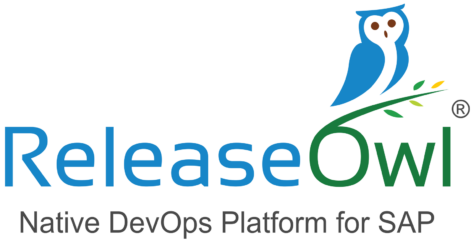SAP Code Inspector
Filter By
Browse By
- SAP Analytics and AI
- SAP Application Development and Integration
- All SAP Application Development and Integration
- SAP ABAP
- SAP ABAP Development Tools
- SAP ABAP Test Cockpit
- SAP API Management
- SAP BAPI
- SAP Basis
- SAP BRF
- SAP Business Application Studio
- SAP CMS
- SAP Design Studio
- SAP Development Tools
- SAP DevOps
- SAP EAI
- SAP EDI
- SAP Extension Suite
- SAP Fiori
- SAP Fiori Elements
- SAP Integration Suite
- SAP Low Code Application Development
- SAP Low Code Automation
- SAP Netweaver
- SAP Release Management
- SAP UI5
- SAP Web Application Server
- SAP Web IDE
- SAP Business Process Management
- SAP Center of Excellence
- SAP CIO
- SAP Customer Experience
- SAP Data and Data Management
- All SAP Data and Data Management
- SAP BW
- SAP BW/4HANA
- SAP Crystal Reports
- SAP Data Archiving
- SAP Data Center
- SAP Data Governance
- SAP Data Integration
- SAP Data Migration
- SAP Data Quality
- SAP Data Services
- SAP Data Strategy
- SAP Data Visualization
- SAP Data Warehouse Cloud
- SAP DMS
- SAP Document Control
- SAP EIM
- SAP ETL
- SAP ETL Tools
- SAP HANA
- SAP HANA Administration
- SAP HANA Deployment Infrastructure
- SAP HANA Studio
- SAP Master Data
- SAP Master Data Governance
- SAP MDM
- SAP Enterprise Architect
- SAP Enterprise Asset Management
- SAP ERP
- SAP Finance
- All SAP Finance
- SAP Accounting
- SAP AR AP
- SAP Asset Accounting
- SAP Billing Systems
- SAP BPC
- SAP BRIM
- SAP Cash Management
- SAP Central Finance
- SAP Controlling
- SAP COPA
- SAP Cost Center Accounting
- SAP Currency Risk
- SAP e-invoicing
- SAP FICO
- SAP Finance Automation
- SAP Advanced Financial Closing
- SAP Financial Consolidation
- SAP Financial Planning
- SAP FX Risk
- SAP General Ledger
- SAP Global Tax Management
- SAP Hyperion
- SAP Order to Cash
- SAP Payment Processing
- SAP Profitability Analysis
- SAP Rebate Management
- SAP S/4HANA Finance
- SAP SWIFT Compliance
- SAP Treasury Management
- SAP Universal Journal
- SAP Governance Risk and Compliance
- SAP Human Capital Management
- SAP Intelligent Technologies
- SAP Platform and Technology
- All SAP Platform and Technology
- SAP Business Technology Platform
- SAP Cloud
- SAP Cloud Connector
- SAP Cloud Integration Platform
- SAP Cloud Migration
- SAP Cloud Platform
- SAP Cloud Providers
- SAP Cloud Strategy
- SAP Digital Signature
- SAP Container Platform
- SAP HANA Enterprise Cloud
- SAP Digital Asset Management
- SAP Smart Forms
- SAP HEC
- SAP Digital Integration Hub
- SAP Hyperscalers
- SAP Infrastructure
- SAP Messaging
- SAP Quality and Testing
- SAP Security
- SAP Spend Management
- SAP Supply Chain Management
- All SAP Supply Chain Management
- SAP APO
- SAP Asset Management
- SAP Business Network
- SAP Digital Manufacturing Cloud
- SAP Digital Twin
- SAP EWM
- SAP IBP
- SAP Inventory Management
- SAP Label Printing
- SAP Logistics
- SAP Manufacturing
- SAP Manufacturing Automation
- SAP MES
- SAP MII
- SAP MM
- SAP MRO
- SAP MRP
- SAP Order Management
- SAP Plant Maintenance
- SAP PLM
- SAP Production Planning
- SAP S&OP
- SAP SD
- SAP SPM
- SAP Supply Chain Planning
- SAP Track and Trace
- SAP Transportation Management
- SAP System Administration
Code Inspector: Overview and Tutorials
What Is Code Inspector?
Code Inspector is a tool that can be used to check and control the quality of ABAP code. Code Inspector can be used to apply all of the tools provided by ABAP Workbench, at the same time.
The ABAP Workbench is a collection of tools that can be used to develop, test, and run ABAP programs.
Who Uses Code Inspector?
Developers and quality managers use Code Inspector.
A developer might use the Code Inspector tool to run a fast ad hoc inspection from ABAP Workbench or from the Code Inspector itself, or to define personal re-usable code inspections.
A quality manager might use Code Inspector to define public re-usable code inspections or approve or reject exceptions.
Code Inspector vs. ABAP Test Cockpit
ABAP Test Cockpit is the successor of Code Inspector. Conversations on SAP’s Community Wiki recommend that ABAP Test Cockpit be used instead of Code Inspector.
ABAP Test Cockpit delivers custom-code analysis in the ABAP programming language. It is used with SAP Business Suite, SAP NetWeaver, and SAP S/4HANA.
Available Tutorials for Code Inspector
Code Inspector: Overview and Tutorials
What Is Code Inspector?
Code Inspector is a tool that can be used to check and control the quality of ABAP code. Code Inspector can be used to apply all of the tools provided by ABAP Workbench, at the same time.
The ABAP Workbench is a collection of tools that can be used to develop, test, and run ABAP programs.
Who Uses Code Inspector?
Developers and quality managers use Code Inspector.
A developer might use the Code Inspector tool to run a fast ad hoc inspection from ABAP Workbench or from the Code Inspector itself, or to define personal re-usable code inspections.
A quality manager might use Code Inspector to define public re-usable code inspections or approve or reject exceptions.
Code Inspector vs. ABAP Test Cockpit
ABAP Test Cockpit is the successor of Code Inspector. Conversations on SAP’s Community Wiki recommend that ABAP Test Cockpit be used instead of Code Inspector.
ABAP Test Cockpit delivers custom-code analysis in the ABAP programming language. It is used with SAP Business Suite, SAP NetWeaver, and SAP S/4HANA.
Available Tutorials for Code Inspector
Some tutorials are still available for Code Inspector, many of which date back to 2015 or earlier.
- Jerry Wang wrote in 2015 that “ABAP code inspector (tcode SCI ) is not just a tool to ensure the correctness of your code. It is a powerful toolset for an ABAPer to make his life easier” in his SAP Community blog, “Useful tips regarding ABAP code inspector that you may not know.” His tutorial is based on NetWeaver 7.40 and discusses how to read the inspection results, along with other useful tips.
- SAP Documentation explains how to start Code Inspector and provides links to other related topics like authorizations, ad hoc inspections, and managing exceptions.
- An SAPinsider article published in 2017, “Secure Your ABAP Code Against Attack,” discusses both ABAP Test Cockpit and Code Inspector. “In the ABAP Test Cockpit, developers can execute static checks and unit tests for their development objects using SAP tools such as the Code Inspector for checking repository objects, the Extended Program Check (transaction SLIN) for running in-depth syntax checks, checks for ensuring a successful SAP HANA or SAP S/4HANA migration,* and SAP NetWeaver AS, add-on for code vulnerability analysis for scanning source code for vulnerabilities,” writes the author.
- Extra Li writes in a 2015 SAP Community blog, “Integrate ATC (ABAP Test Cockpit) or Code Inspector Check with ChaRM” that both Code Inspector and an ATC check can be triggered during a transport request and be integrated with ChaRM. But he says their behaviors will be different.
493 results
-

FBI and CISA Issue Alert for Threat Actors Actively Exploiting SQL Injection Vulnerabilities
Reading time: 2 mins
The FBI and CISA issued an alert this week to urge organizations to urgently address SQL injection vulnerabilities in software.
-

From SAPinsider Las Vegas 2025: How Norfolk Southern is Transforming Field Operations with Mobile SAP Applications
Reading time: 5 mins
Norfolk Southern is revolutionizing field operations by developing tailored mobile applications that enhance workforce efficiency, support offline functionality, and integrate real-time data, as highlighted by SAP expert Zach Davis at the 2025 SAPinsider conference.
-

- SAP Quality Management
 Premium
Premium
Exploit SAP Quality Management to Handle External Activities
Reading time: 27 mins
Learn about the main Quality Management (QM) functionalities relevant for external activities during the production process in the case of discrete manufacturing, using the Materials Management (MM), Production Planning (PP), Quality Management (QM), and Financial Accounting (FI) modules. Follow details about the main customizing settings to be done in the system from a QM point...…
-
-

 Premium
Premium
Change Data Basis Functionality Simplifies Product Classification in SAP Global Trade Services 10.1
Reading time: 18 mins
Learn how to set up a numbering scheme in SAP Global Trade Services 10.1 to facilitate the assignment of tariff and commodity codes for products sold by your organization. See how completing this process in version 10.1 is different from older versions of SAP Global Trade Services. Key Concept Product classification is the process of...…
-

 Premium
Premium
Automate Overhead Allocation through Purchasing Info Records
Reading time: 26 mins
SAPexperts FinancialsFind out how to use standard SAP functionalities to allocate procurement-related overhead in both regular purchasing and subcontracting scenarios. Key Concept Using configuration settings, you can maintain the material overhead condition in purchase info records, use it in the standard cost-estimate process, and absorb the overhead during a goods receipt transaction. You can extend...…
-

 Premium
Premium
A Methodology for Managing Custom Developments in a Compliance Landscape
Reading time: 14 mins
New custom developments are present in most SAP implementations. Sometimes they are small modifications or enhancements and sometimes they are more significant. It’s important to ensure that the custom developments are compliant with your security requisites and policy. It is essential to understand from a security and compliance point of view the roles and responsibilities...…
-

 Premium
Premium
Easily Maintain Workers’ Compensation Classification Data for the US
Reading time: 8 mins
In this overview of US-based workers’ compensation, learn about the general functionality that SAP provides to keep your company in compliance. See how to set up the premium deductions and the workers’ compensation codes in Organizational Management. Key Concept The US federal or state Occupational Safety and Health Act agency provides a listing of workers’...…
-
-

Seven tips and tricks to optimize AP Barcode Document Linkage
Reading time: 8 mins
SAP Barcodes provide an efficient way to store and manage documents. Learn how to optimize your barcode document linkage process with these 7 tips and tricks. Membership Required You must be a member to access this content.View Membership LevelsAlready a member? Log in here
-

- SAP S/4HANA Finance
 Premium
Premium
Key Steps to Follow During a Migration to SAP Simple Finance 1503
Reading time: 19 mins
Learn the necessary configuration, migration steps, post-migration steps, tips, and tricks during an SAP Simple Finance migration. Key Concept SAP S/4 HANA Finance, On-Premise Edition has product versions SAP Simple Finance 1503 and SAP S/4HANA Finance 1605, the latter being the successor of the former. If you want to implement and use SAP Accounting powered...…
-

 Premium
Premium
Set Up Tax Codes to Properly Report Deferred VAT
Reading time: 7 mins
Deferred Value Added Tax (VAT) is a special VAT that you only need when reporting to the tax authorities after the related invoice has been paid. See how to do this in the SAP system by linking a special target VAT code to a deferred VAT code. Key Concept Value Added Tax (VAT) is a...…
Become a Member
Unlimited access to thousands of resources for SAP-specific expertise that can only be found here.
Become a Partner
Access exclusive SAP insights, expert marketing strategies, and high-value services including research reports, webinars, and buyers' guides, all designed to boost your campaign ROI by up to 50% within the SAP ecosystem.
Upcoming Events
Related Vendors
Your request has been successfully sent


